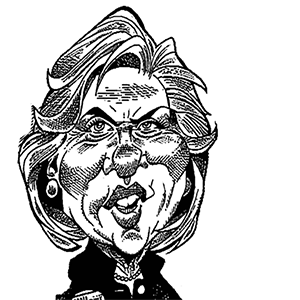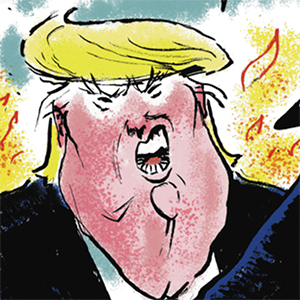Israelis wary of Lebanon truce trickle back to damaged homes
Published in News & Features
The school is out of commission — hit by heavy shrapnel in July. Some homes are boarded up from direct hits. The avocado orchards have lost many hectares from fires sparked by missiles.
But Kibbutz Dafna, an Israeli farming community 2 kilometers (1 mile) from the Lebanese border, is giving off a tentative air of hope just now, as a ceasefire with Lebanon that began Nov. 27 is largely holding.
“Listen to that silence,” said Major David Baruch as he stood in front of Dafna’s administrative offices, wearing no helmet or protective gear. “It hasn’t been heard in 14 months.”
The U.S.- and French-brokered deal started a 60-day transition during which Israel and the Hezbollah militia agreed to silence their guns. In addition, Hezbollah would pull its forces some 30 kilometers (19 miles) north of the border, Israeli troops would return home, replaced by Lebanese and international peacekeepers. And the tens of thousands of residents forced out on both sides would slowly return.
The start was rough. Israel repeatedly fired at Hezbollah forces it said were violating the accord’s terms. Lebanese Prime Minister Najib Mikati complained to Washington and Paris that Israel breached the agreement at least 60 times. And the other day Hezbollah fired mortars, prompting Israel to hit back at its forces across Lebanon.
Israeli Defense Minister Israel Katz said more such violations would lead Israel to stop distinguishing between the militia and the state of Lebanon. Hezbollah, designated as a terrorist group by the U.S., has held its fire.
One problem was that Hezbollah and Lebanese officials failed to make it sufficiently clear to residents that they shouldn’t move back just yet because the Israeli forces were still in place. Many Lebanese raced home right after the deal was announced.
Israeli residents of the north, lodged for over a year at government expense in hotels and temporary housing, were told to wait, and they have.
The other big difference between the two sides is the extent of death and damage. Whole swaths of southern Lebanon have been reduced to rubble by the Israeli air force and ground troops, and at least 3,000 Lebanese are dead, many of them civilians. In Israel, the destruction is more contained and the death toll is around 70.
“In the villages close to the border, we found tunnels and bunkers and battle plans, and destroyed them extensively,” Major Baruch said.
Never — not in the 1948 War of Independence or the 1973 Yom Kippur War — had Kibbutz Dafna, founded in 1939, been evacuated before October 2023. It was a sign of how traumatized the country was when thousands of Hamas operatives poured into southern Israel, killing and kidnapping. The subsequent war in Gaza has killed about 44,000 people, according to the enclave’s Hamas-run health authority, which doesn’t distinguish between combatants and civilians.
“When we saw that, we feared Hezbollah would do the same here, so when we were told to evacuate we did,” said Arik Yaacovi, who manages Dafna. The community’s 1,050 residents have earned a living through farming, solar energy and tourism in one of the most bucolic and prized areas in Israel. The order went out at 6:30 a.m. on Oct. 16 and by 4 p.m. everyone was gone.
Among them was Orit Praag, 69, who was born on the kibbutz and whose parents were among its founders. This week she was walking around the community’s grounds in a way she’d been unable to do for 14 months.
“Until a week or two ago, you couldn’t stand right here,” she said in front of her son’s house, whose windows were boarded up after being broken when the house next door took a direct hit last summer. “My grandchildren are coming back to spend the night at our house for the first time since we all left.”
School principal Ravit Rosental said it will be a while before the pupils can return because of the damage to the building’s roof. They’ve been studying 40 kilometers (25 miles) away in a converted factory and many students and teachers have grappled with intense emotional turmoil.
“I’m talking about addiction, alcohol, sleeplessness,” she said outside the school building.
Manager Yaacovi said he hasn’t talked to a single kibbutz family that doesn’t plan to come back. “Still,” he said, “It will take a generation for a sense of security to return.”
A 10-minute drive west is the town of Kiryat Shmona, most of whose 24,000 residents were also evacuated at the start of the war. Yotam Degani, a city official, said it had never occurred to anyone that an evacuation would be ordered and there was no plan in place when the order came.
“Over years we’d grown used to being shelled,” he said, “and we have probably more bomb shelters per capita than any city in the world — 431 public bomb shelters. Yet almost everyone left when the order came. This year alone we’ve had 1,500 direct hits, 1,000 houses damaged or totaled.”
Ahi Natan’s family compound was one of those damaged. As he showed a visitor around, the 35-year-old married musician was asked for his view of the ceasefire and the future.
“Here’s what I know,” he said. “Ceasefire or no ceasefire, my sons are going to be fighting in Lebanon. And their sons are going to be fighting in Gaza. We know how they feel about us. They want us dead. And no matter what, we’re not leaving.”
———
(With assistance from Julius Domoney.)
©2024 Bloomberg L.P. Visit bloomberg.com. Distributed by Tribune Content Agency, LLC.






Comments